
Reykjanes Volcano Overview
After over 800 years of quiet, the Reykjanes Peninsula reawakened in 2021, with several volcanic eruptions impacting the region. In between eruptions, numerous earthquakes occur to remind the people of Iceland what lies below.
Sundhnúkagígar Crater Row Series

July 2025 Eruption
The eruption at the Sundhnúkur crater row on the Reykjanes Peninsula started on July 16 and lasted for nearly three weeks before activity ceased on August 4th. During the eruption, a lava field formed, covering 3.3 km² with an estimated volume of 26.8 million cubic meters. Although the eruption has ended, hazards remain in the area, including toxic gas, thin lava crusts hiding molten lava, and the risk of sudden lava surges.
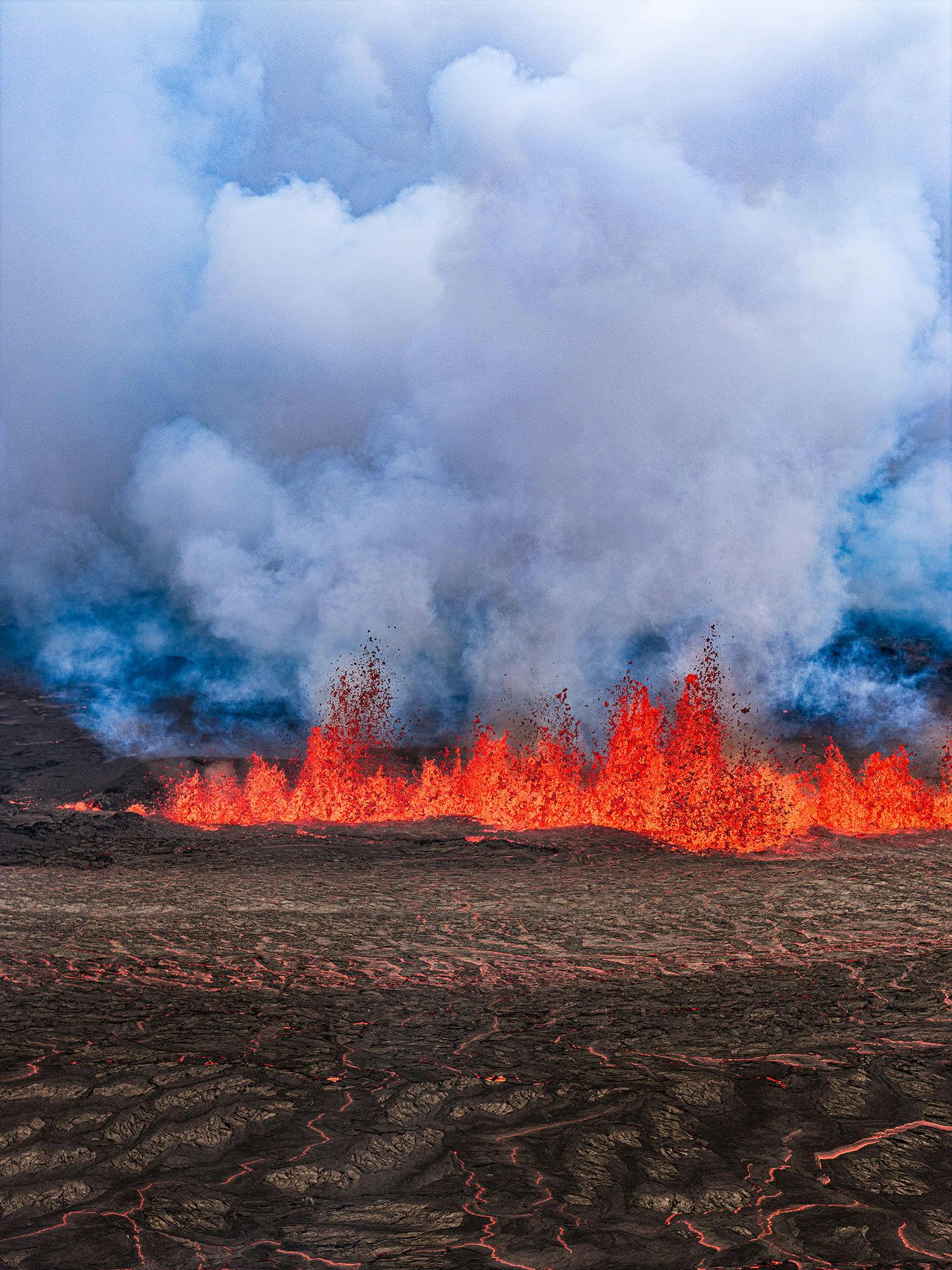
April 2025 Eruption
After months of waiting, the Sundhnúkagígar fissure volcano eruption April 1st, 2025, following a strong earthquake swarm.
The eruption, which started just north of Grindavík, led to the evacuation of the town and the nearby Blue Lagoon. The fissure quickly grew to about 500 meters and breached a northern protective barrier. This marks the 11th eruption on the peninsula since 2021 and the 9th in the Sundhnúkagígar system. Despite the eruption’s proximity to key sites, air travel at Keflavík International Airport remains unaffected, and safety measures are being actively enforced.
For more details about the eruption, read here.
November 2024 Eruption
An eruption began between Stóra-Skógfell and Sýlingarfell at 11:14 PM on November 20. The fissure, approximately 3 kilometres long, has stopped expanding, with lava flowing eastward and westward. This eruption is notably smaller than the August 22 event, with a current lava flow rate of 1,300 m³/s compared to 2,500 m³/s during the previous eruption.
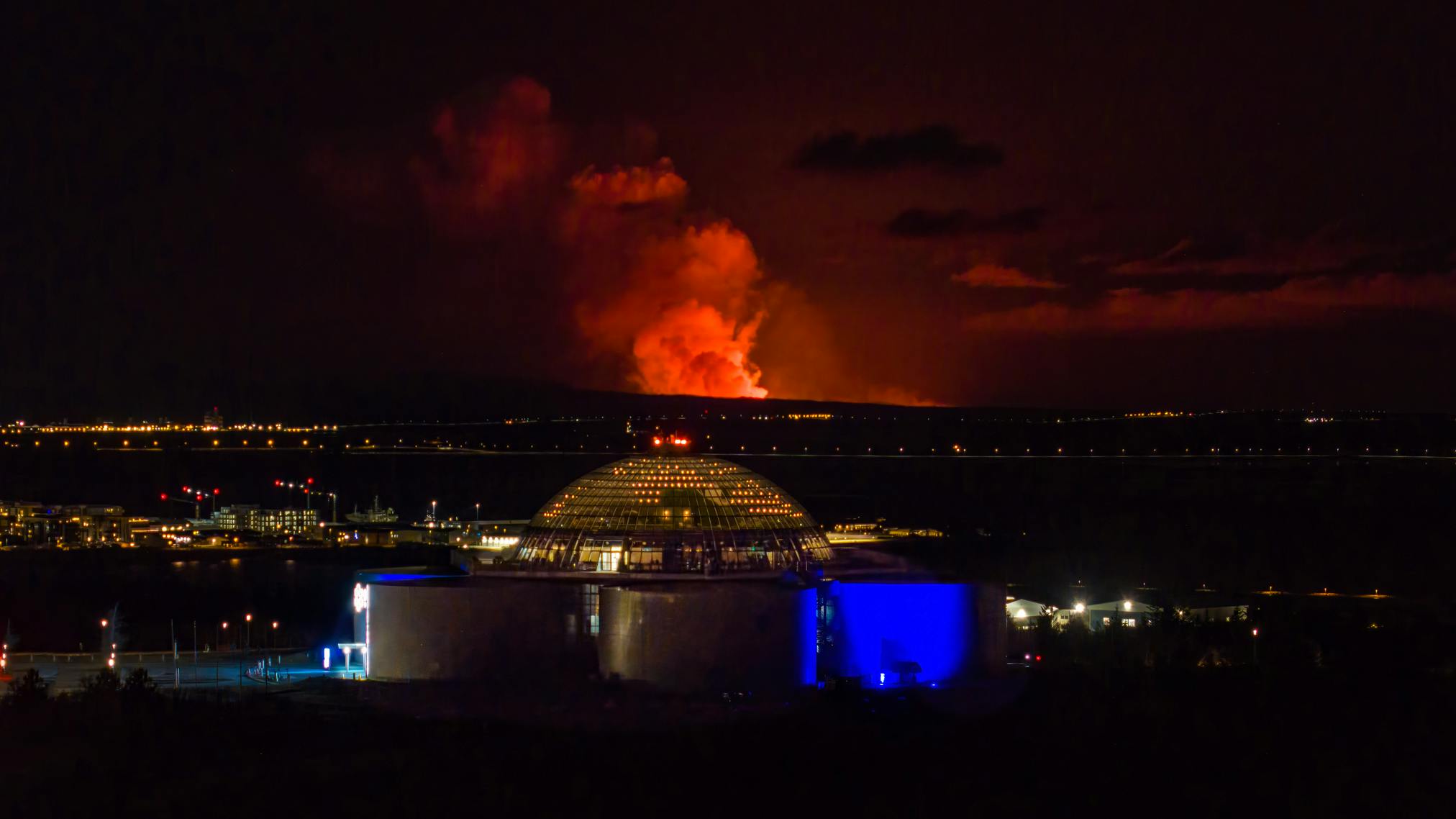
Unlike past events, this eruption was not preceded by increased seismic activity. While magma volumes beneath Svartsengi were similar to those before the last eruption, larger volumes now appear necessary to trigger eruptions, signaling potential changes in eruption patterns. The lava has crossed Grindavíkurvegur and a hot water pipeline, reaching the Blue Lagoon’s parking lot and continuing westward. Authorities remain vigilant as the situation develops.
The fissure continued to erupt in three defined areas, with the central section being the most active. After a week, activity remained steady, with the eruption continuing from a single vent. Unlike previous eruptions in the Sundhnúkar crater row, this eruption has not diminished as quickly, with a lava flow rate comparable to the most intense eruptions at Fagradalsfjall.
The volcanic activity has been gradually decreasing over the past two weeks, with the last crater activity recorded at approximately 7:00 AM on December 8th, marking 18 days since the eruption began. This is the largest of the seven eruptions since December 2023.
August 2024 Eruption
At the start of the eruption, a fissure opened between Stóra-Skógfell and Sundhnúk, similar to previous volcanic events. In the initial hours, the fissure continued to extend northeast from Stóra-Skógfell. As the eruption advanced northeast, activity in the southern part diminished.
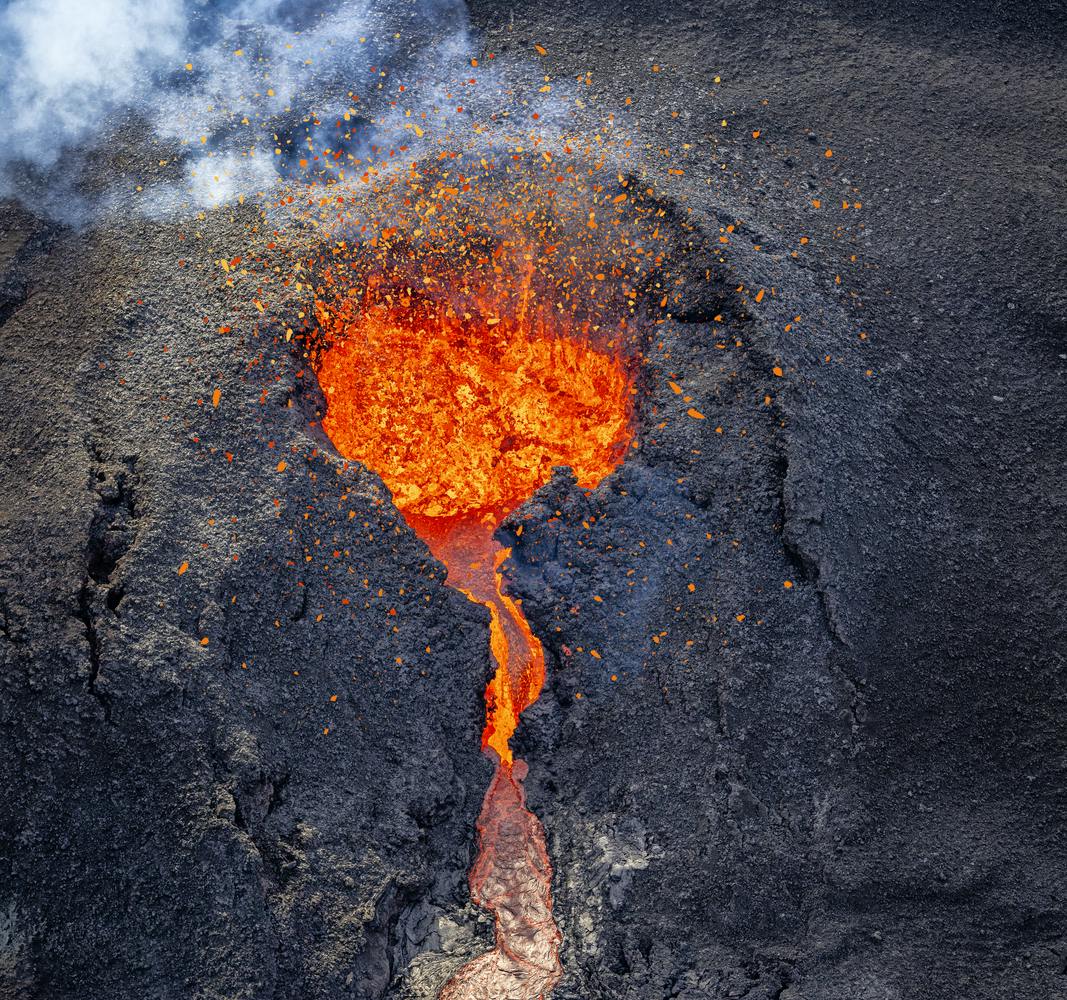
The current eruption is now occurring along a fissure that stretches from Stóra-Skógfell northeastward for about 2-3 kilometres. This eruption extends slightly further north than the ones that have taken place in this area since December 2023.
The eruption was declared over on September 6th, with no visible activity observed in the craters. However, ground uplift has resumed in Svartsengi, signalling that magma is once again accumulating in the magma chamber. The eruption lasted for about 14 days.
See Updated Details About the 2022-2025 Reykjanes Eruptions Here.
May 2024 Eruption
The Sundhnúkagígar Crater Row May eruption began on May 29th at 12:46 following intense seismic activity and continued for 24 days, making it the fifth eruption since December 2023. The eruption featured a 3.4 km long fissure, with lava flows impacting Grindavík and Nesvegur roads and an extrusion rate of 1,500-2,000 m³/s.
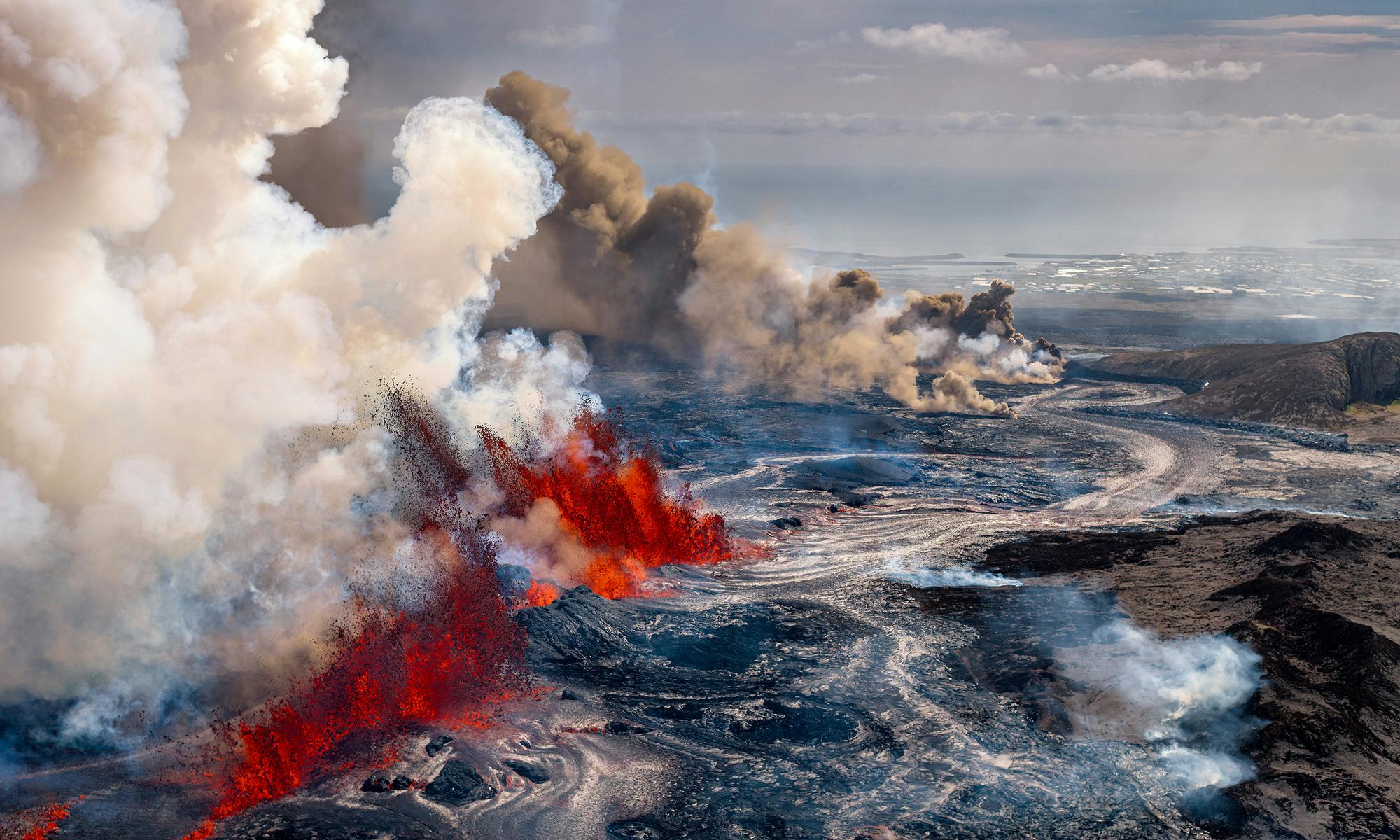
Although seismic activity quickly subsided after the eruption began, indicating stabilization, land uplift in Svartsengi was detected about ten days later, suggesting continued magma accumulation. This eruption produced the largest lava field in volume and area in the region, further emphasizing the dynamic geological activity of the Reykjanes Peninsula.
March 2024 Eruption
At 8:23 pm on Saturday, 16th March, a volcanic eruption began on the Reykjanes Peninsula, the fourth since December.
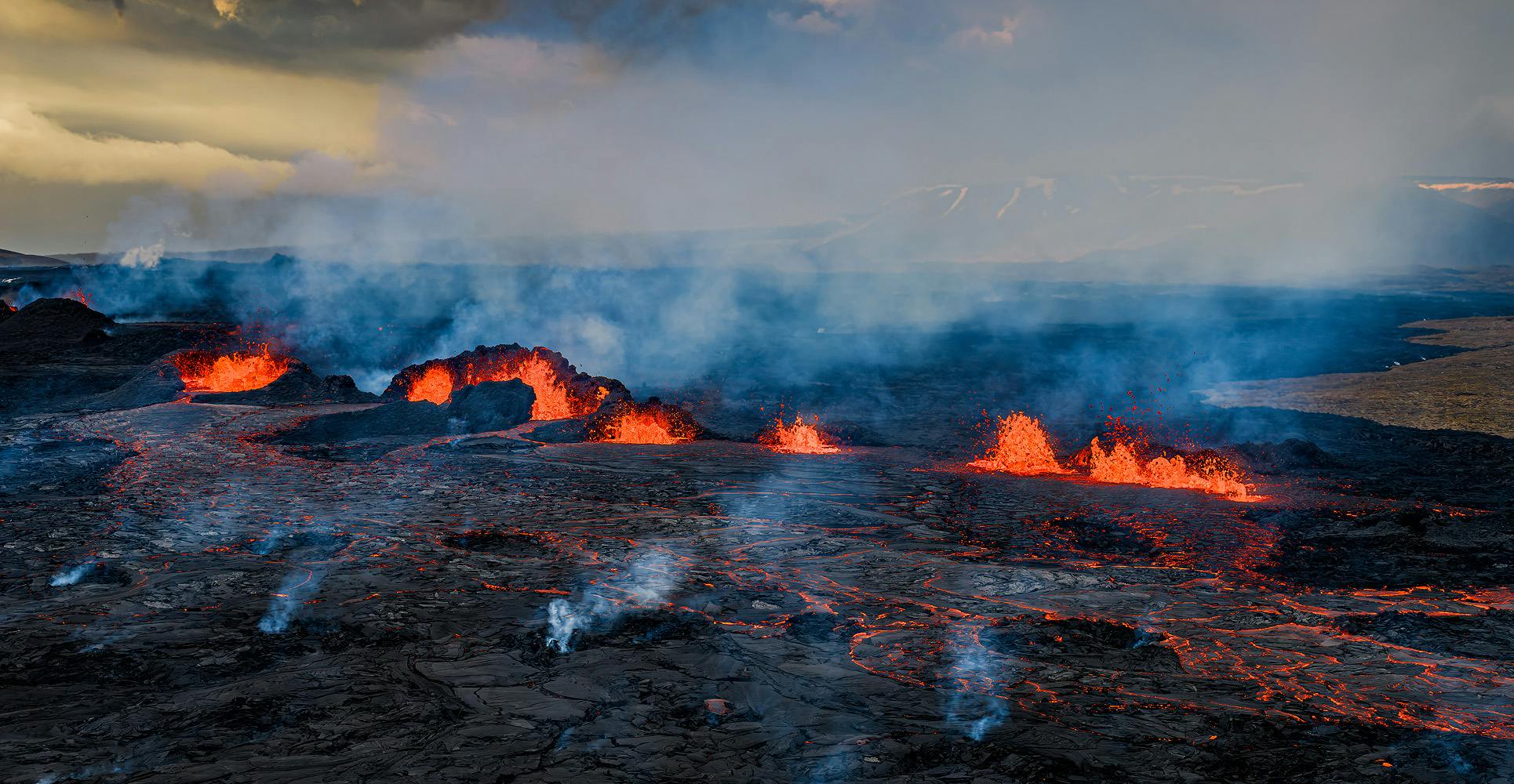
The lava flowed west, crossing the Grindavíkurvegur and southeast along the defences of Grindavík town, nearing Suðurstrandarvegur and flowing towards the sea. Authorities are actively fortifying defences and safeguarding infrastructure.
This eruption, lasted nearly two months, ending on May 9th. Despite the eruption’s conclusion, continued land uplift in Svartsengi suggests ongoing magma accumulation, prompting authorities to prepare for potential future eruptions.
February 2024 Eruption
The Sundhnúkagígar eruption began on February 8th at 6:02am, following earthquakes near Grindavík, and led to evacuations of the Blue Lagoon and Grindavík town. This eruption, the sixth in five years on the Reykjanes Peninsula and the third in quick succession, mirrored the December 2023 event.
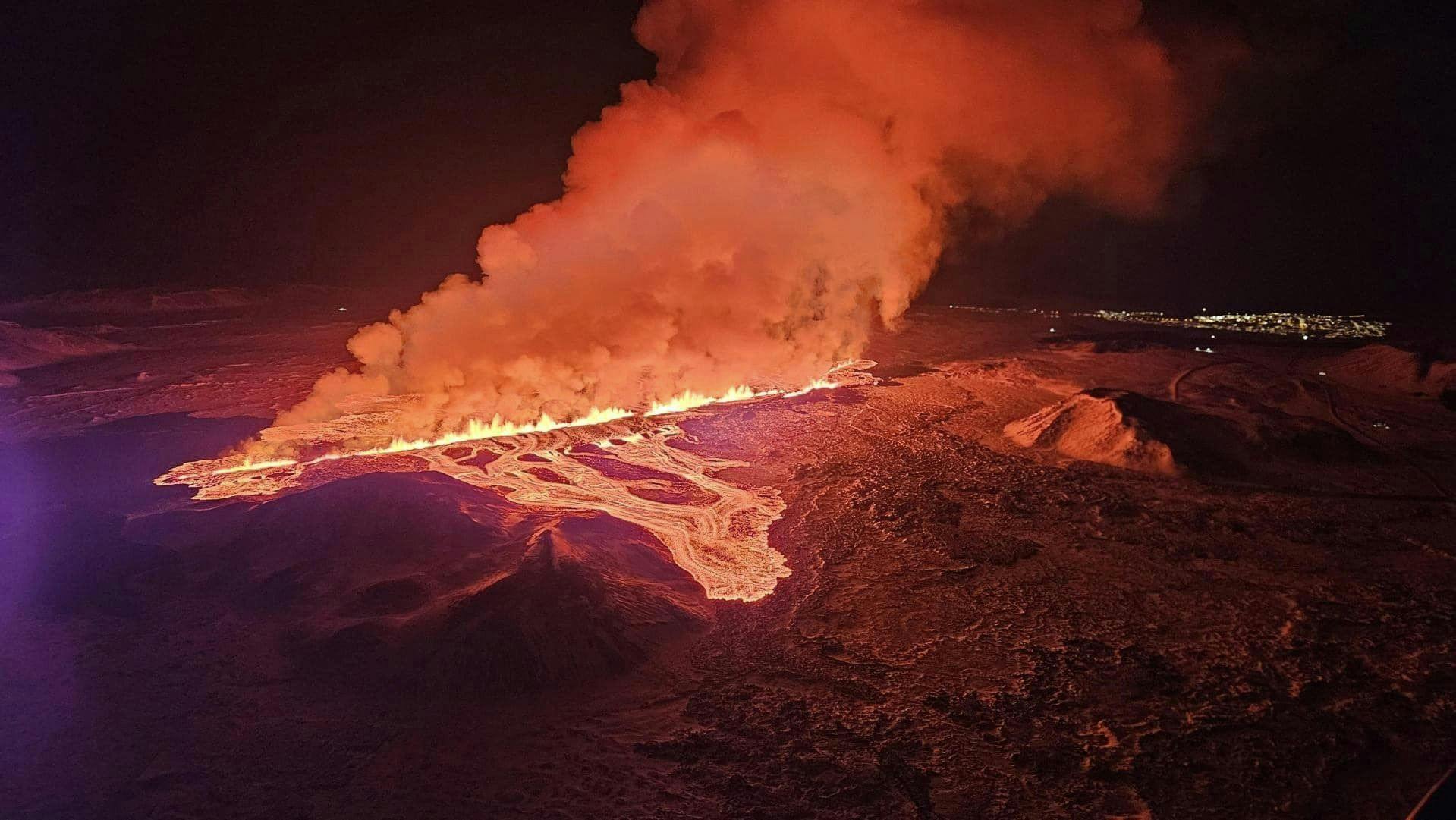
The 3 km fissure released lava primarily eastward, causing disruptions at the Svartsengi geothermal power plant. Volcanic activity significantly decreased by February 9th. Unlike the 2010 ash-producing eruption, this fissure eruption did not impact flights to or from Iceland.
January 2024 Eruption
The January 14, 2024, eruption on the Reykjanes Peninsula marked the fifth volcanic event in the area within four years, occurring just outside the town of Grindavík. A large fissure opened at 7:57 am, about 900 meters from the town, with lava primarily flowing westward, away from the town due to recent fortifications.
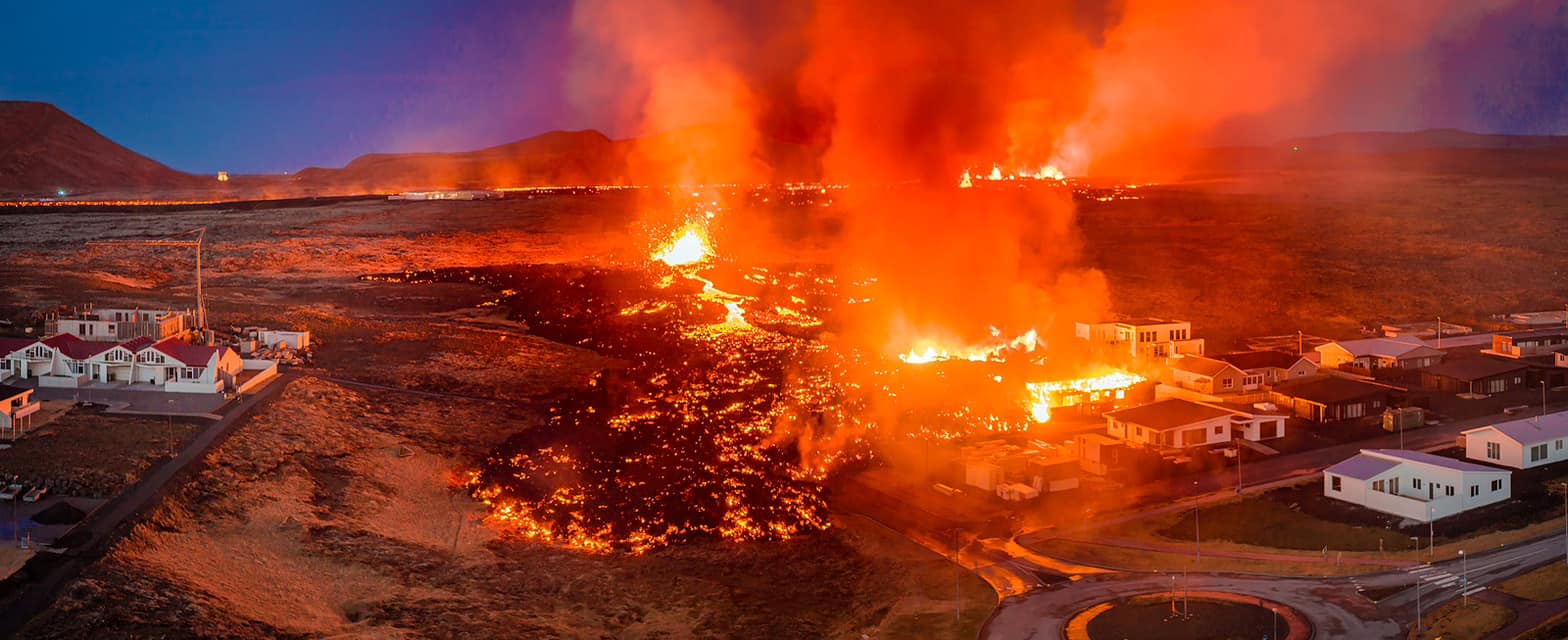
However, a smaller fissure opened at 12:10 pm, only 200 meters north of Grindavík, leading to lava entering the town and destroying at least three houses. Lava flow from this smaller fissure ceased by midday on January 15, and the eruption ended in the early hours of January 16.
December 2023 Sundhnúkagígar Eruption
The first of many eruptions in the Sundhnúkagígar Crater Row Series.

In December 2023, a volcano erupted in an uninhabited part of the Reykjanes Peninsula after several weeks of intense earthquake activity, the fourth eruption in the region since 2021. On December 18, 2023, at 22:17, a fissure opened up, sending large lava streams into the air and lasting for just three days.
The fissure stretched nearly 4 km and was located between Sýlingarfell and Hagafell. The December 2023 eruption at Sundhnúkagígar produced a significantly higher lava flow than past events.
See further details on the December 2023 Reykanes Eruption Here!
Fagradalsfjall volcano system
July 2023 Litli Hrútur Eruption
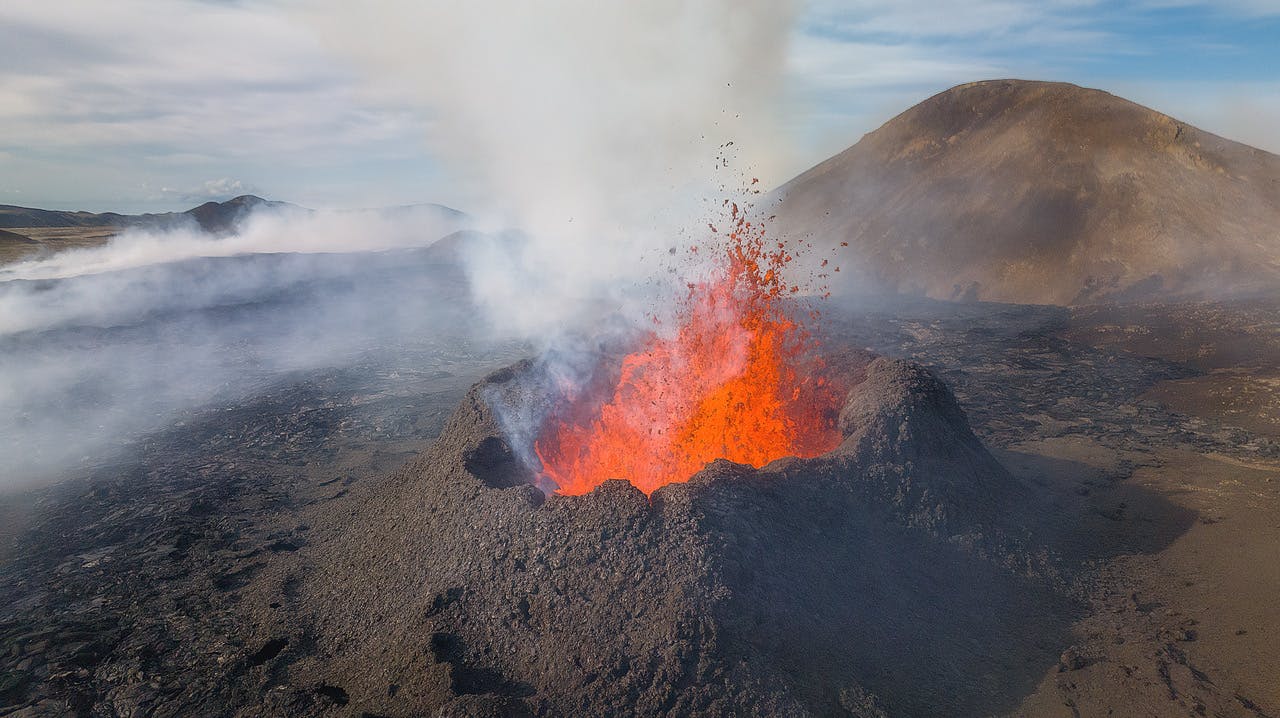
On the afternoon of 10 July 2023 to 5 August 2023, an eruption occurred in the Fagradalsfjall volcano system, with a 900-metre-long fissure opening up. Just 11 months after the last eruption, the new crack sparked excitement from locals and tourists alike.
The third eruption in three years, the active fissure followed thousands of earthquakes over a period of several days. Magma broke through the surface, shooting fountains of lava metres into the air. The eruption site was named Litli-Hrútur (Little Ram) after a nearby hyaloclastite hill.
2022 Fagradalsfjall (Meradalir) Eruption
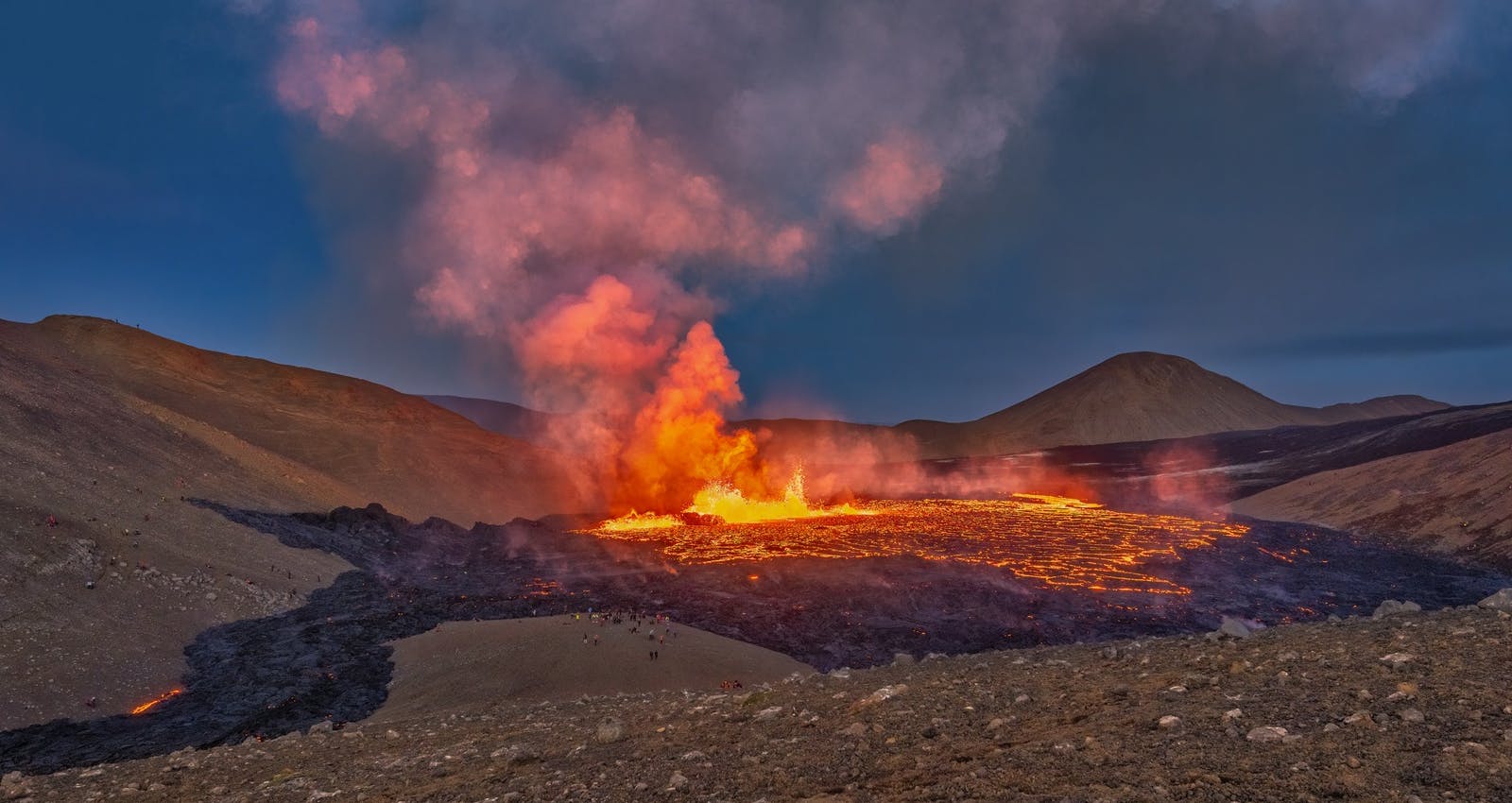
Another eruption began on 3 August 2022 and ended on 21 August 2022, similar to the 2021 eruption. On 3 August 2022, following weeks of earthquakes, another eruption began at Fagradalsfjall. The lava flow decreased around mid-August and stopped on 21 August 2022. Ultimately, roughly 12 million cubic metres of lava had erupted. The eruption site was named Meradalir (Mare Valleys).
2021 Fagradalsfjall (Geldingadalir) Eruption
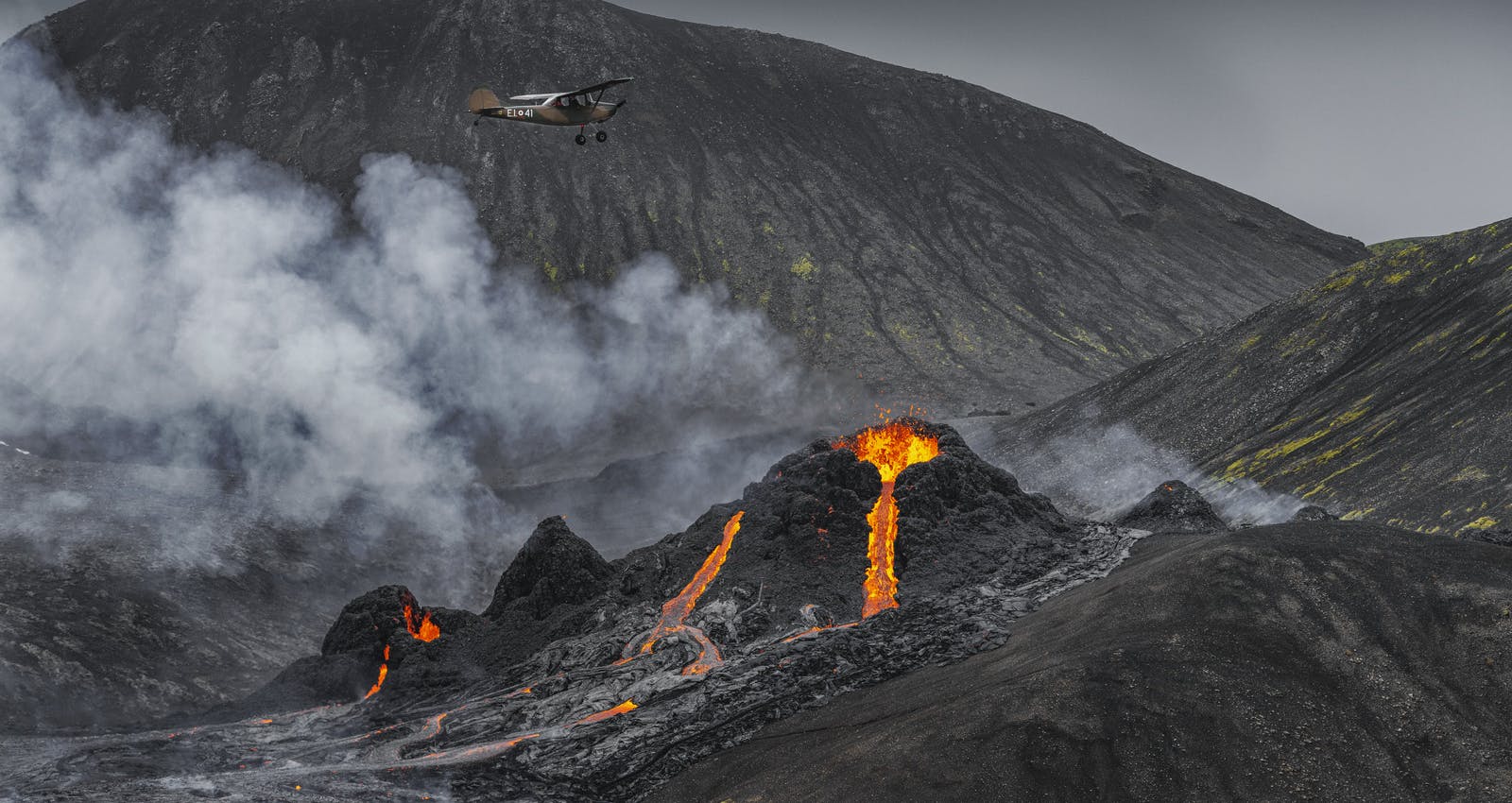
On 19 March 2021, the volcanism of the Reykjanes Peninsula area awakened when a fissure vent appeared in Geldingadalir to the south of Fagradalsfjall mountain. Reports at the time stated that a 600–700-metre-long fissure vent began ejecting lava, which covered an area of less than 1 square kilometre. The lava flows posed no threat to residents, as the region is primarily uninhabited. Five vents eventually emerged, all spewing lava metres into the air.
By 2 May 2021, only one fissure that opened near the initial eruption site on Geldingadalir, remained active and developed into a towering volcano. There was the occasional explosive eruption within its crater that at times reached heights of hundreds of metres. The volcano's rim had risen to a height of 334 metres above sea level by September 2021. The 2021 eruption emitted fresh lava until 18 September 2021.
What is the Current Situation on the Reykanes Peninsula?
A seismic swarm hit the Reykjanes Peninsula in southwest Iceland with more than 5,500 small earthquakes in late October 2023, raising the prospect of a volcanic eruption. A new volcanic eruption began on December 18, 2023, and lasted for three days. The eruption site is called Sundhnúkagígar.
Whether you’re planning a visit or just fascinated by geology, it’s worth checking which active volcanoes Iceland is monitoring closely this year.
Where Can You Learn About Volcanoes in Iceland?
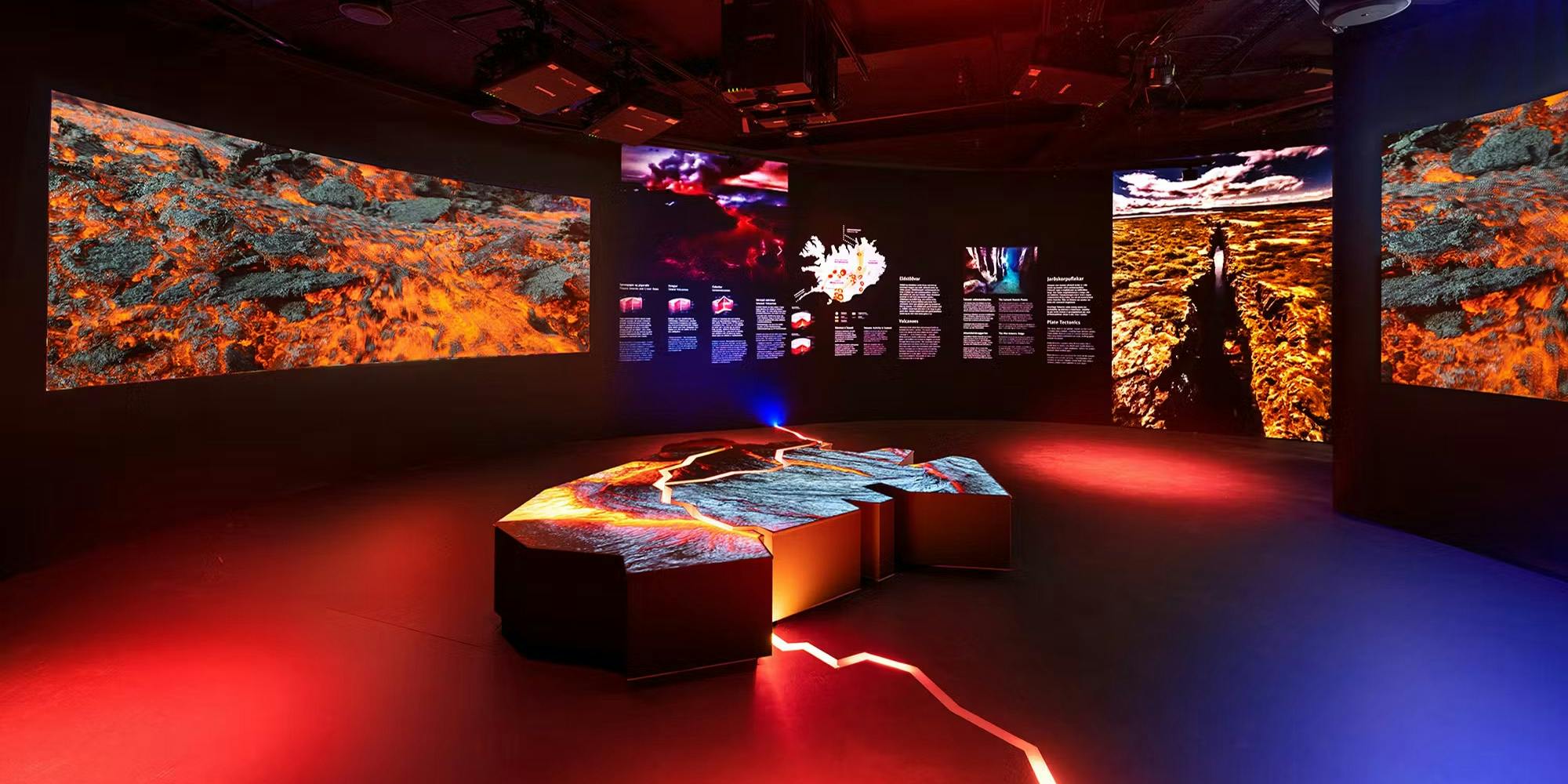
Perlan's Forces of Nature exhibition allows guests to feel the power of volcanoes, earthquakes, and geothermal energy that powers the island. Guests will learn that volcanoes form when heat and pressure build up beneath the earth's surface. The earth's weak points tend to be along fault lines where tectonic plates converge or diverge, as in Iceland's case.
Perlan's exhibition shows that volcanic activity in Iceland is so diverse that researchers typically speak of "volcanic systems" rather than individual volcanoes. The island has 30 active volcanic systems, each with many types of volcanoes.
FAQ
Is it safe to visit an eruption site?
There are several factors to consider before visiting an erupting volcano. When a volcano erupts, visibility can be low, and dangerous gas levels can shift quickly and be harmful. Make sure you check safetravel.is for the latest updates on safety conditions. The authorities can always close access to the hiking trail if gas levels reach a dangerous level or if weather conditions are poor.
What would happen if there is an eruption on the Reykjanes peninsula?
The result of an eruption would depend on its size and location. There would likely be earthquakes before the eruption, and warnings would be issued by authorities. Tours to the region would be cancelled, and roads to the area would be closed if warranted. Geologists are constantly monitoring the volcanoes on the island, and procedures are in place to keep people safe in the event of an eruption.







